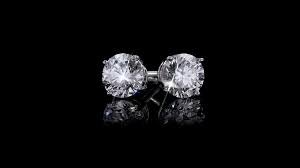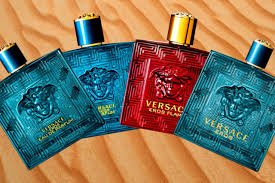
lab grown diamond studs
What Are Lab Grown Diamond Studs?
Lab grown diamond studs are a modern and sustainable alternative to traditional diamond jewelry. They feature diamonds that are created in advanced laboratories rather than mined from the earth, yet they possess the same chemical composition, optical brilliance, and durability as natural diamonds. These diamonds are set into timeless stud earring designs, making them one of the most popular and versatile pieces of jewelry available today. Unlike simulants such as cubic zirconia or moissanite, lab grown diamonds are real diamonds, offering the beauty and prestige of natural stones but with a more ethical and affordable background.
How Lab Grown Diamonds Are Made
Lab grown diamonds are produced using two main methods: High Pressure High Temperature (HPHT) and Chemical Vapor Deposition (CVD). HPHT replicates the natural conditions under which diamonds form underground by applying extreme pressure and heat to carbon. CVD, on the other hand, grows diamonds in a plasma reactor where carbon-rich gas layers deposit on a seed crystal. Both methods result in diamonds that are chemically and optically identical to mined diamonds. Advanced technology ensures that these stones meet strict standards of clarity, color, and cut, producing gems that rival or even surpass their natural counterparts.
Why Choose Lab Grown Diamond Studs?
Lab grown diamond studs are gaining popularity for several compelling reasons:
- Ethical sourcing – No mining means fewer environmental and human rights concerns.
- Affordability – Lab grown diamonds cost 30–50% less than mined diamonds of the same size and quality.
- Sustainability – A reduced ecological footprint makes them a greener choice.
- Beauty and brilliance – They look just as dazzling as natural diamonds under the light.
- Variety – Available in a wide range of shapes, sizes, and settings.
These benefits make lab grown diamond studs especially appealing to people who want elegance without compromise.
Styles of Lab Grown Diamond Studs
Diamond studs may seem simple, but there are many variations to suit personal tastes:
- Classic round brilliant – The most popular choice, offering maximum sparkle.
- Princess cut – A square shape with sharp edges, modern and elegant.
- Cushion cut – A softer square shape with rounded corners, vintage charm.
- Oval or pear – Elongated shapes that add uniqueness to a stud design.
- Halo studs – Smaller diamonds surrounding the center stone for extra brilliance.
Each cut changes the look of the earrings, while settings such as prong, bezel, or martini cup add different levels of security and style.
The Difference Between Lab Grown and Natural Diamond Studs
To the naked eye, lab grown and mined diamond studs look identical. Both score a perfect 10 on the Mohs hardness scale, making them equally durable for everyday wear. The primary differences lie in their origin and cost. Natural diamonds form over billions of years deep within the earth, while lab grown diamonds are created within weeks in controlled environments. This scientific creation process reduces costs significantly, meaning buyers can often purchase a larger or higher-quality diamond for the same budget. The value proposition is clear: with lab grown diamond studs, you are paying for the beauty of the stone rather than the rarity of its origin.
How to Choose the Right Lab Grown Diamond Studs
When selecting lab grown diamond studs, the same 4Cs apply:
- Cut – The most important factor, as it determines brilliance and sparkle.
- Color – Lab grown diamonds are often available in near-colorless grades (D–H).
- Clarity – Fewer inclusions make the diamond appear flawless.
- Carat weight – Affects both size and price.
Buyers should also consider metal choices, such as platinum, white gold, yellow gold, or rose gold, to match personal style and skin tone. Earring backings, like screw-backs or push-backs, influence comfort and security.
Lab Grown Diamond Certification
Just like mined diamonds, lab grown diamonds can be certified by reputable grading organizations. Independent labs such as IGI (International Gemological Institute) and GIA (Gemological Institute of America) provide grading reports that outline the diamond’s 4Cs and confirm its authenticity. A certificate ensures transparency and helps buyers make confident purchases. Trusted retailers typically provide certification for every stone above a certain carat weight, giving assurance of quality. For additional information on grading standards, resources like GIA explain the process in detail.
Price Comparison With Natural Diamond Studs
One of the most attractive features of lab grown diamond studs is their price point. On average, lab grown diamonds cost 30–50% less than equivalent mined diamonds. For example, a pair of one-carat total weight natural diamond studs may cost $3,000 to $5,000, while lab grown diamond studs of the same quality may cost $1,500 to $2,500. This price difference allows buyers to either save money or purchase a larger size within the same budget. While resale value is generally higher for natural diamonds due to rarity, lab grown studs appeal to those who prioritize beauty and ethical sourcing over investment potential.
Environmental and Ethical Considerations
Traditional diamond mining is associated with environmental damage, including land disruption, water pollution, and carbon emissions. In contrast, lab grown diamonds require significantly fewer resources. They eliminate the risk of unethical practices sometimes linked to the diamond trade, such as conflict diamonds. For environmentally conscious consumers, lab grown diamond studs represent a more responsible choice. Organizations and jewelry advocates often highlight this as a major advantage when comparing options. Retailers such as Brilliant Earth focus heavily on promoting ethical alternatives, making it easier for buyers to shop with their values in mind.
Caring for Lab Grown Diamond Studs
Caring for lab grown diamond studs is simple, as they are just as durable as mined diamonds. Recommended care includes:
- Cleaning with warm water, mild soap, and a soft brush.
- Storing in a soft pouch or separate compartment to avoid scratching.
- Having settings checked periodically by a jeweler to prevent loose stones.
Avoiding harsh chemicals and rough handling will help maintain the sparkle for years to come. Since they are genuine diamonds, they will not lose brilliance over time if cared for properly.
Common Myths About Lab Grown Diamonds
Several misconceptions surround lab grown diamonds:
- “They are fake.” – False; lab grown diamonds are chemically identical to natural diamonds.
- “They don’t sparkle the same.” – Incorrect; cut quality determines brilliance, not origin.
- “They are not durable.” – Lab grown diamonds are just as hard and long-lasting.
- “They have no resale value.” – While resale is lower, most buyers choose them for personal enjoyment rather than investment.
Clarifying these myths helps buyers understand the true value of lab grown diamond studs.
Are Lab Grown Diamond Studs Worth It?
For many people, lab grown diamond studs are absolutely worth it. They combine timeless style, real diamond beauty, and a lower price point with ethical sourcing. They are suitable for everyday wear, special occasions, or as meaningful gifts. While natural diamonds hold a unique place in terms of rarity and long-term value, lab grown studs allow buyers to enjoy larger and higher-quality stones for the same budget. For those who value sustainability, affordability, and modern innovation, they are one of the smartest jewelry purchases available today.
Conclusion
Lab grown diamond studs offer the perfect balance of elegance, ethics, and affordability. With the same sparkle and durability as natural diamonds, they are redefining luxury jewelry by making it more accessible and sustainable. Whether purchased as a gift, a personal treat, or an investment in timeless style, they stand as a symbol of innovation in the jewelry world. As technology continues to advance, the popularity of lab grown diamonds will only increase, making them a lasting trend in fine jewelry.






